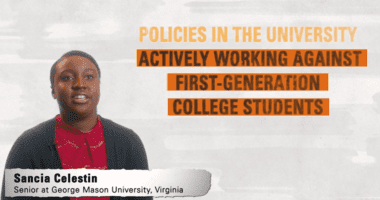Improving Higher Ed Outcomes Starts With Smart Data
Below is the first in a four-part series exploring how high-performing colleges and universities use data to improve student retention and graduation rates. Detailed lessons from eight institutions are shared in our higher education practice guide. This series highlights how some of those colleges have made progress and how others can follow their example to increase student success.
I recently travelled to Lexington, Ky., for a retreat and planning session of chief academic officers from the states’ public colleges and universities. The Kentucky public colleges have increased their graduation rates significantly in recent years — up 7 points (to 51 percent) since 2005. Likewise, the rate for transfer students has jumped 12 points to 65 percent.
But these public institutions, like the vast majority of colleges nationwide, see low-income students and students of color graduating at lower rates than their peers. It’s a problem plaguing many colleges, and these gaps in degree completion continue to persist despite the efforts of the campus leaders at the Kentucky meeting.
My role at the retreat was to introduce Ed Trust’s higher education practice guide. Written for university presidents and provosts, the guide profiles eight high-performing and fast-gaining institutions that have used data to engage campus stakeholders and create a problem-solving culture focused on improving student success.
The lessons from these leaders are distilled to 10 analyses that can be replicated on any campus. The idea is to, first, ask questions about barriers to graduation and then, second, use data to identify and remove obstacles students face on the path to degree completion. These are tools to help university leaders orient institutional resources to more fully support students in their academic pursuits.
As the Kentucky provosts digested the lessons from the practice guide, they began to speak of initiatives on their campuses to improve graduation rates and close gaps. These strategies included summer bridge programs, freshmen learning communities, and intrusive academic advising.
Research shows that improved student success is not the result of one singular program or policy. But many colleges have fallen prey to the “spaghetti approach” — throw a bunch of programs at the problem and see what sticks. High-performing colleges have taken a different approach: Use data to create targeted initiatives with the support of senior leaders and execute with fidelity.
In the next several days, we will publish a series of blog posts that take a closer look at the leading institutions profiled in the practice guide. Each campus faced different challenges, but each used data to answer questions and engage stakeholders in a problem-solving quest.
Check back later this week, when we explain how Georgia State University diagnosed the causes of its low graduation rates.











